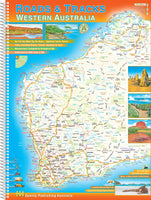How to Install an Anderson Plug – Wiring Guide & Tips

How to Install an Anderson Plug
Use this step by step as a guide and you will have your Anderson plug installed in no time.1. Gather Your Tools and Supplies
Purchase the plug, cable and fuse. You will need a basic toolbox to help complete the job. A crimper will make life much more comfortable but a heavy duty one is even better as the connector’s diameter is quite large.2. Cable
Decide where the cable will run through the vehicle and feed it through. You have the option of either going underneath the vehicle along the chassis rail or inside the car under the carpet edge trim. Make the engine bay the last place the cable is threaded. Remember to use the shortest possible route to reduce the voltage drop.3. Connect the Fuse
Connect the inline fuse or reset breaker. The inline fuse wire should be crimped to the positive (red) wire of the 6mm wire, and an eyelet crimped at the other end to be attached to the battery’s positive terminal, later when you are ready. Next crimp an eyelet connector to the negative (black) wire of the 6mm wire so that it can be attached to the negative battery terminal later.4. Fit the Relay
If you are using one, fit the relay to the 12V accessory power feed.5. Dual Core Wire
Cut the dual core 6mm wire and place the wire from the battery into the relay at the pin numbered 30 and power out to the rear of the vehicle at 87 pin. Place the relay under the dash so it’s easily accessible or just cable tie it to a bracket or wiring loom.6. Fit the Anderson Plug
Connect the plug to the vehicle’s tow bar using an Anderson plug holder. The holder keeps the Anderson plus connection clean. Crimp the connectors to the wire and fit them into the correct sections of the Anderson plug.7. Fit the Fuse
Fit a 20A fuse into the inline fuse holder and attach the wires to the battery terminals.8. Test the System
Attach the wires to the battery terminals to test the circuit. Use a simple test light or multimetre with the vehicle’s engine on. Wiring your caravan or camper trailer to your vehicle isn’t that hard but as you can see there are a quite a few steps involved. Every 4WD enthusiast will have their own opinion on best practises when it comes to installation. We recommend taking the time to research your vehicle to ensure you understand what type of power system your running. Give yourself a full day to finish the job properly and avoid any complications! If not installed correctly a bad DIY job can cause damage to you and your vehicle.Wiring an Anderson Plug
The correct Anderson plug cable size depends on what you are powering. Warning: Always use the correct cable size for the job! To calculate the correct cable size, you need to consider voltage drop, cable length and load current. Anderson Plugs come in three current ratings (50A, 120A and 175A). The standard size plug is 50A. The average caravan fridge draws 15A so the smallest plug will carry enough current to do the job. Cable is sold based on the diameter which includes the insulation. So, a 6mm wire has an actual diameter of 4.5mm to 5mm of copper wire. This core diameter is compatible with a 50A plug and a standard caravan fridge. You will also need to choose either an inline fuse or reset breaker switch. Choose an inline fuse that is dust and waterproof so you can go anywhere reliably. If you aren’t investing in a dual battery system, we recommend using a relay so you don’t flatten the battery when the fridge is left running while the car is off.Crimp vs Solder?
People have strong opinions on whether the contacts/connectors that attach to your wire should be crimped, soldered or both. In the above installation guide we suggested crimping the connectors but make up your own mind if another method is better. Crimping is the most common and quickest method to wire your Anderson plug. Without A Hitch recommend that if done properly it will give you excellent connection at all times. City Theatrical recommend:- Remove the outer layer of the cable and expose the wire
- Twist the wire strands to keep them together - avoid wicking
- Slide the contacts/connectors onto both wires
- Slide contact/connectors and the wire into your crimper with the curved end of the contact pointing upwards.
- Crimp down and release
Conduct a pull test to ensure the connector is attached correctly and firmly. If it comes off you are crimping incorrectly. Soldering takes a little more effort but could be better at keeping the connectors in place. Stewart from Jamie’s Touring Solutions recommends soldering. Watch this tutorial and make your best decision based on your knowledge and level of experience.
Knowing how to install and wire an Anderson plug is a handy skill to have. We strongly recommend that you do the research and find out as much as you can about your vehicle and power management system before attempting a DIY Anderson plug installation. If you find this confusing or daunting then it might be best to get an auto electrician to do the job for you. Once your caravan has an anderson plug installed check out our wide range of 4WD and Camping books for your next road trip. We recommend the Caravan Survival Guide. Looking for particular map or guidebook contact an expert at the Chart & Map Shop in store, call on (08) 9335 8665 or contact us online.








Comments